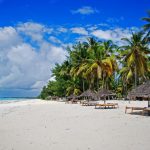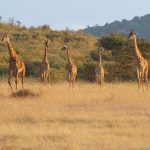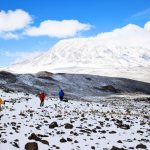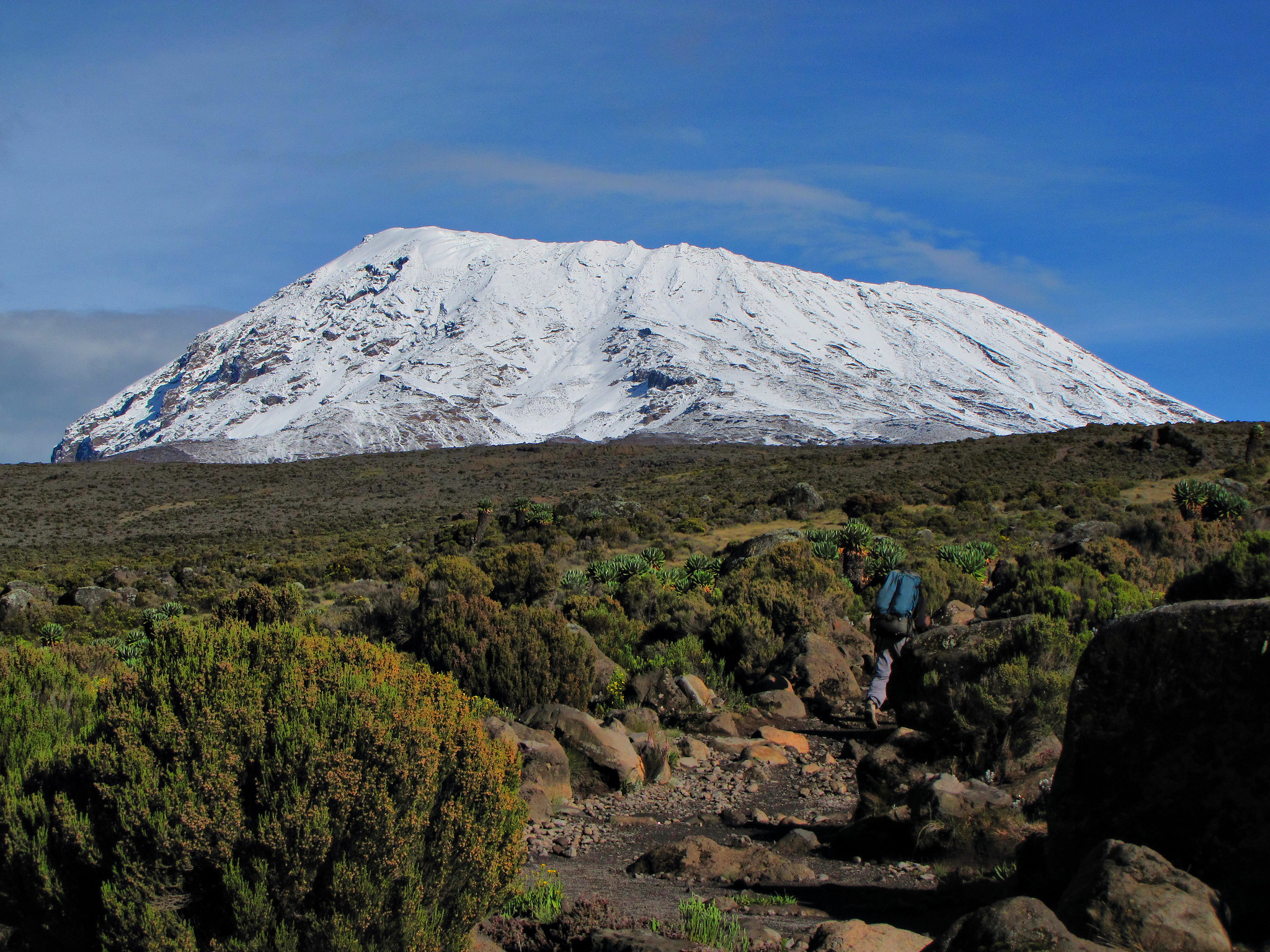9 Days Rongai Route
Route Overview
One of the less popular official Kilimanjaro routes is the Rongai path. The benefit of this is that there won’t be many other climbers around and you’ll be walking through pristine nature and breathtaking landscape for the most of the route. The topography of this route makes it difficult to acclimate because you can’t readily follow the “walk high, sleep low” philosophy, which is one of the reasons it is silent.
The route, which leaves from the Rongai gate, travels through a number of distinct temperature zones, each of which offers breathtaking vistas and sensations. The path offers hikers an experience in a relatively untamed wilderness where it is possible to view large animals like antelope, elephants, and buffalo because to its distant location. On the second day, as we ascend to Kikelewa Caves, we begin to see the Kenyan Amboseli Plains in the distance. After ascending to the mountain’s second summit, Mawenzi, the trail then crosses the Saddle, a desolate area that connects Mawenzi and Kibo. After reaching the top, you can view Mount Kilimanjaro from both sides by choosing the busier Marangu route for the descent.
The Rongai route, which is in Kilimanjaro’s rain shadow and experiences significantly less rain than the southern approaches, is one of the finest ways to climb the mountain during the wet season.
Route Itinerary
Day 1: Arrival
To get to Kilimanjaro International Airport, every hiker must arrange their own flights (JRO). We will set up a private transfer for you from JRO to your hotel. You will meet your local Tito Tanzania representative that evening or early the next morning and receive a thorough pre-climb briefing.
- Transport: Private transfer (0.8 hour, 40 km)
- Accommodation: Hotel
Day 2: Rongai Trailhead to First Cave Camp
Transportation from your hotel to Marangu Gate for registration, followed by a second transfer (an additional two and a half hours) to the Rongai trailhead. Before we begin our ascent via the village of Nale Moru, our porters gather and load our provisions and bags. Before gently ascending through a pine forest and arriving at First Cave Camp at 2,600m elevation, the narrow, meandering path first crosses corn fields.
- Transport: Private transfer (2.5 hours, 90 km)
- Hiking time: 4 – 5 hours
- Ascent: 650 m
- altitude: 2600 m
- Accommodation: Camping
- Meals included: Breakfast / Lunch / Dinner
Day 3: First Cave Camp to Kikelewa Camp
After leaving Second Cave (3450m) on the way to Kibo, the track continues upward until it reaches Kikelewa Caves (3600m). From here, the scenery begins to widen, allowing you to appreciate just how enormous Kilimanjaro truly is. We spend the night camped here.
- Hiking time: 6 – 7 hours
- Ascent: 1000 m
- altitude: 3600 m
- Accommodation: Camping
- Meals included: Breakfast / Lunch / Dinner
Day 4: Kikelewa Camp to Mawenzi Tarn
A short, steep ascent over grassy slopes is rewarded with breathtaking views in all directions and a real sense of nature. Shortly before we arrive at the following camp at Mawenzi Tarn (4330 m), which is magnificently located in a cirque directly below the tall spires of Mawenzi, we leave the vegetation behind. The afternoon will be free for you to relax or tour the neighborhood to help you acclimate.
- Hiking time: 4 – 5 hours
- Ascent: 730 m
- altitude: 4330 m
- Accommodation: Camping
- Meals included: Breakfast / Lunch / Dinner
Day 5: Aclimatization at Mawenzi Tarn
As part of the acclimatization process, we’ll spend a whole day at and around Mawenzi Tarn. With numerous pathways running up the ridges and towers of Mawenzi, there will be much to do, and our staff will assist in setting up quick trips to explore the area.
- altitude: 4330 m
- Accommodation: Camping
- Meals included: Breakfast / Lunch / Dinner
Day 6: Mawenzi Tarn to Kibo Camp
The Kibo Campsite (4750m), located near the base of the Kibo crater rim, is reached by traveling across the lunar desert known as the “Saddle” between Mawenzi and Kibo. Resting up for tomorrow’s final ascent takes up the remainder of the day
- Hiking time: 3 – 4 hours
- Ascent: 420 m
- altitude: 4750 m
- Accommodation: Camping
- Meals included: Breakfast / Lunch / Dinner
Day 7: Kibo Camp to Summit to Horombo Hut
By 23:30, you’ll be awakened, and we’ll start our ascent after some tea and biscuits. The going truly gets rough at this point. The trail’s initial segment is a rocky slope that leads to Hans Meyer Cave (5150m). Afterwards, atop the crater rim, we ascend zigzag style to Gilman’s Point (5681m). The hardest part of the trek is this portion, which is extremely steep and covered in stone scree. We may run into snow from Gilman’s Point all the way to Africa’s highest point, Uhuru Peak (5895m). How long we can spend taking pictures on the summit will depend on the weather, after which we will head back to Kibo Camping and spend the night there. We have our final meal on the mountain later in the evening before a well-earned rest.
- Hiking time: 12 – 13 hours
- Ascent: 1145 m
- Descent: 2175 m
- altitude: 5895 m
- Accommodation: Camping
- Meals included: Breakfast / Lunch / Dinner
Day 8: Horombo Hut to Marangu Gate
Following breakfast, we keep moving down to the Marangu Gate while passing Mandara Hut. After a well-earned shower, head to your hotel to celebrate.
- Transport: Private transfer (1 hour, 40 km)
- Hiking time: 6 – 7 hours
- Descent: 1740 m
- altitude: 3720 m
- Accommodation: Hotel
- Meals included: Breakfast / Lunch
Day 9: Departure
We’ll say farewell after a much-needed night of rest. If you have scheduled an airport transport with us, a safari, or a vacation to Zanzibar, we will pick you up in the morning for your next destination.
- Transport: Private transfer (0.8 hour, 40 km)
- Meals included: Breakfast
Booking Now
Items included:
- Professional, experienced, mountain guides:
- All Park fees
- Rescue fees
- All meals while on the Mountain
- Arrival and Departure transfers
- Guides, Porters, cook salaries and park fees
- Quality Mess tents with table and chairs
- Large portions of fresh, healthy, nutritious food
- Clean, purified drinking water
- Crisis management and safety procedures
- Fair and ethical treatment of porters
- Flying Doctors insurance (AMREF) during the safari
Items excluded:
- International Flights
- Alcoholic and soft drinks not included
- Visa fees
- Tips
- Personal spending money for souvenirs etc.
- Travel insurance






















